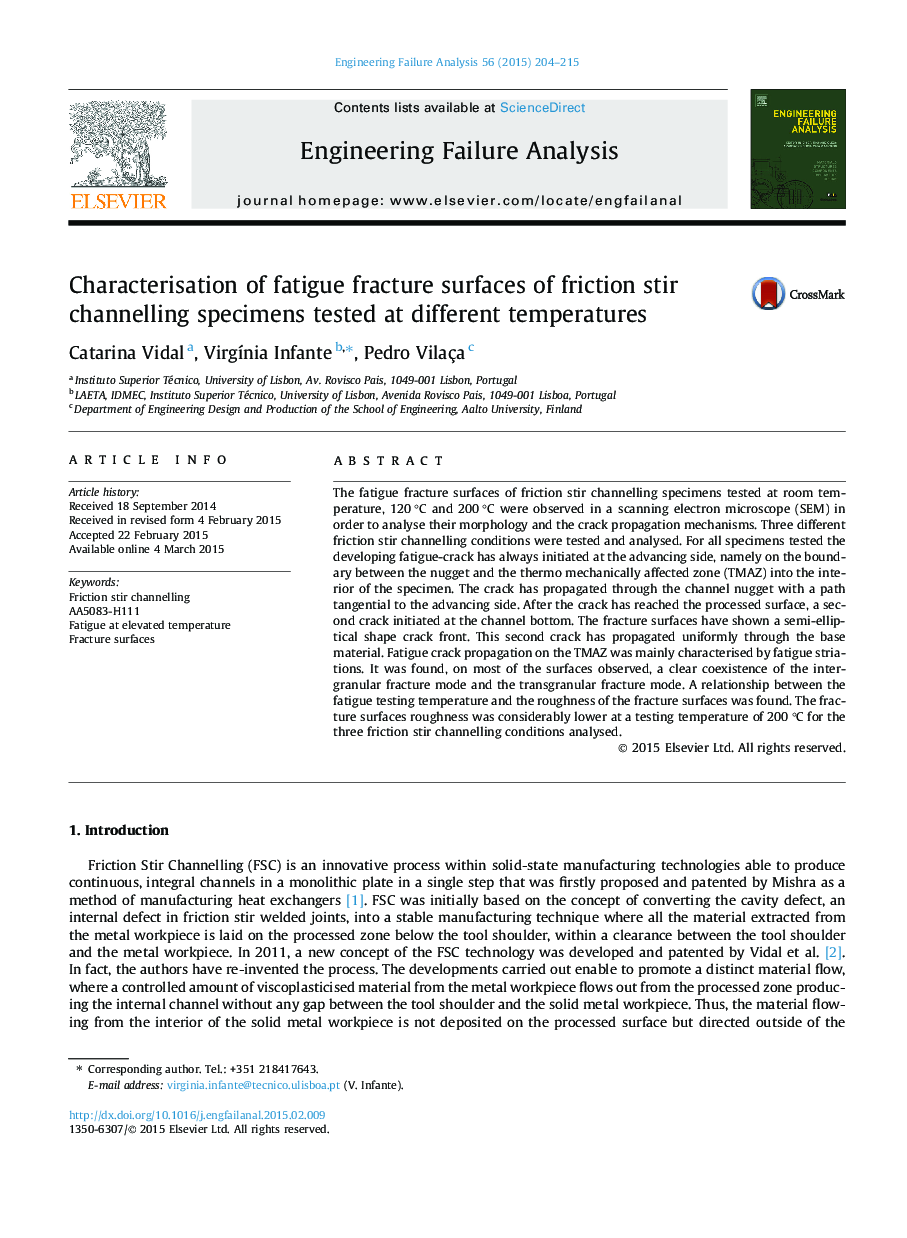| کد مقاله | کد نشریه | سال انتشار | مقاله انگلیسی | نسخه تمام متن |
|---|---|---|---|---|
| 768291 | 1462969 | 2015 | 12 صفحه PDF | دانلود رایگان |
• The specimens fracture took place in the nugget/TMAZ interface on the advancing side.
• Fatigue crack propagation on the TMAZ was mainly characterised by fatigue striations.
• A mix fracture of intergranular decohesion and transgranular cracking was observed.
• The fracture surfaces show less roughness as the temperature increases.
The fatigue fracture surfaces of friction stir channelling specimens tested at room temperature, 120 °C and 200 °C were observed in a scanning electron microscope (SEM) in order to analyse their morphology and the crack propagation mechanisms. Three different friction stir channelling conditions were tested and analysed. For all specimens tested the developing fatigue-crack has always initiated at the advancing side, namely on the boundary between the nugget and the thermo mechanically affected zone (TMAZ) into the interior of the specimen. The crack has propagated through the channel nugget with a path tangential to the advancing side. After the crack has reached the processed surface, a second crack initiated at the channel bottom. The fracture surfaces have shown a semi-elliptical shape crack front. This second crack has propagated uniformly through the base material. Fatigue crack propagation on the TMAZ was mainly characterised by fatigue striations. It was found, on most of the surfaces observed, a clear coexistence of the intergranular fracture mode and the transgranular fracture mode. A relationship between the fatigue testing temperature and the roughness of the fracture surfaces was found. The fracture surfaces roughness was considerably lower at a testing temperature of 200 °C for the three friction stir channelling conditions analysed.
Journal: Engineering Failure Analysis - Volume 56, October 2015, Pages 204–215
